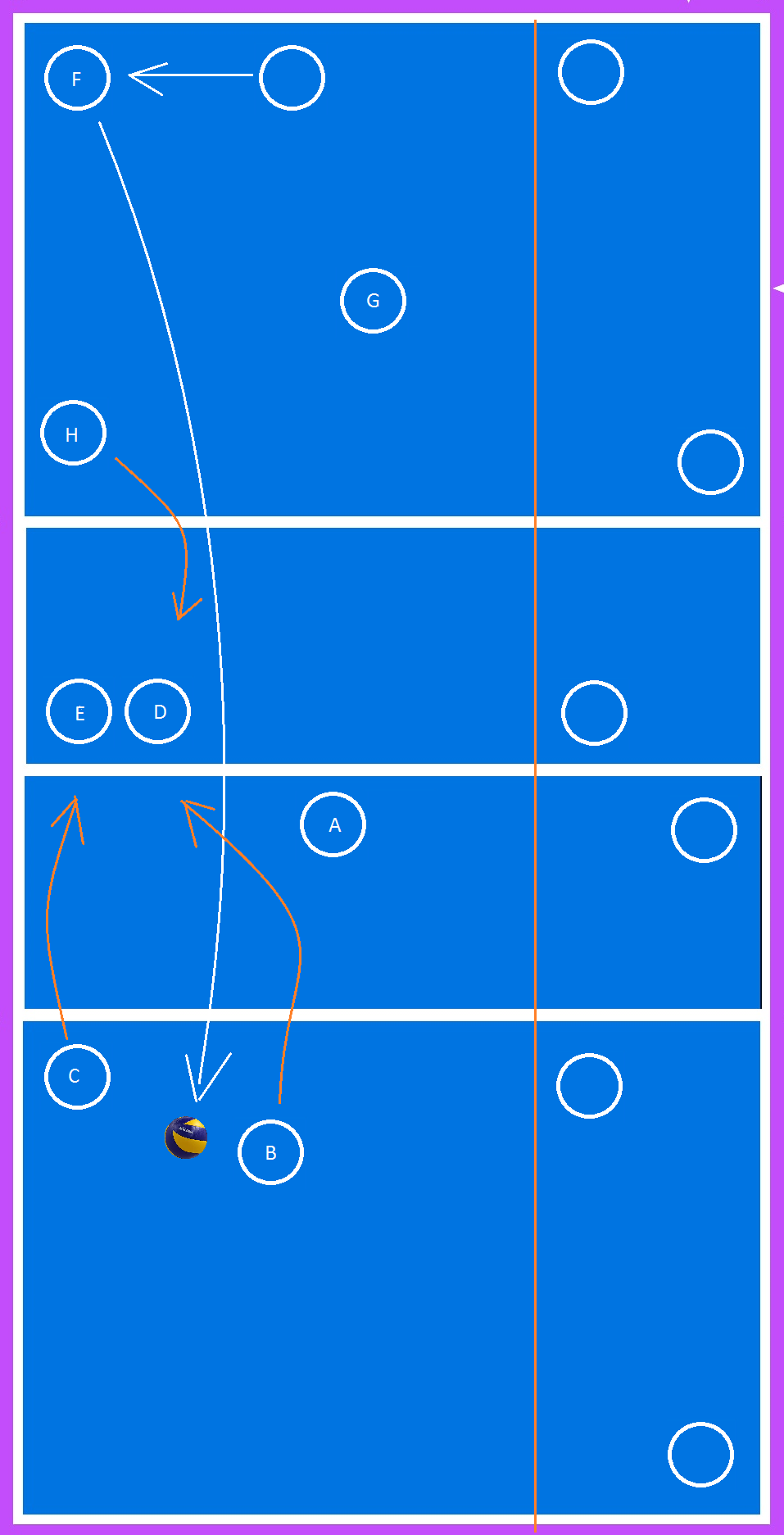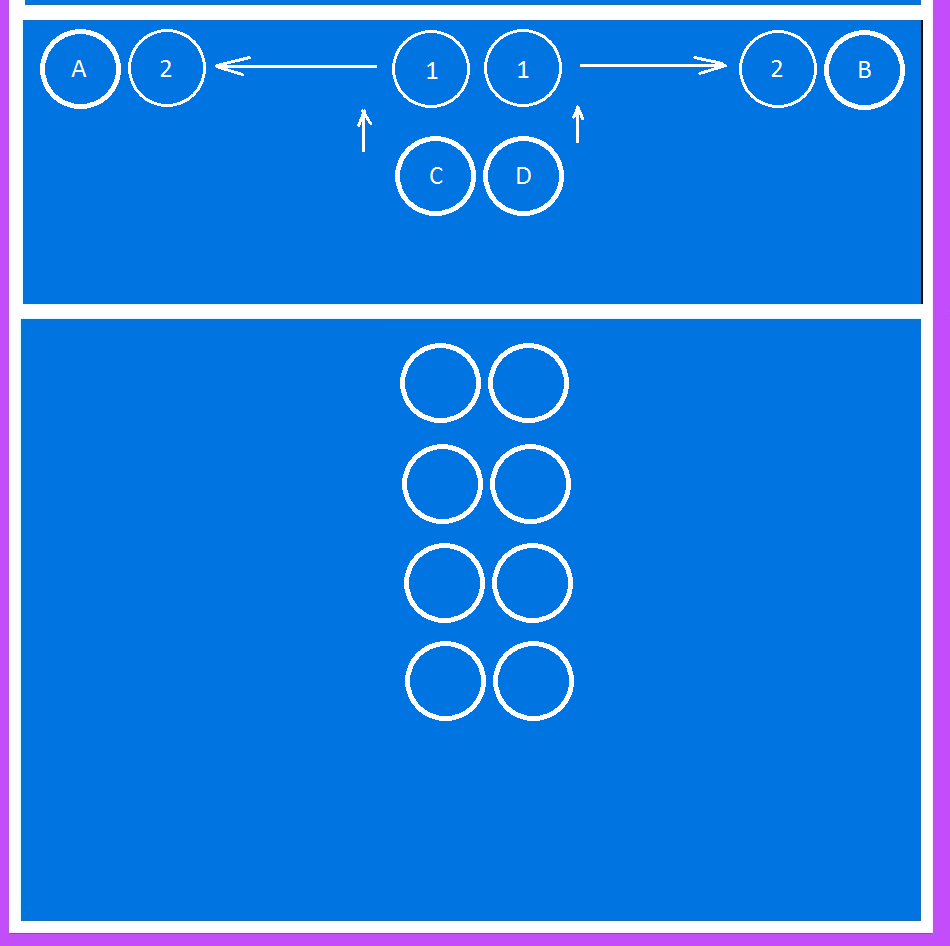Volleyball drills for technique condition
- It’s fair to say that volleyball is a very fast game.
- That means that a volleyball player should be able to move quickly to do great job on the court.
- Volleyball players should focus on increasing foot speed as well as core rotational speed.
- Now, it’s time for you to get familiar with some of the best volleyball exercises for explosive speed.
- Volleyball players should do high knee skips for a number of reasons.
- It’s important to know that doing this type of exercise has a positive impact on a volleyball player’s calves, hamstrings and hip flexors.
- If you do this type of exercise regularly then you will be able to improve your vertical jump, endurance and coordination over time.
- Oftentimes, a volleyball player needs to jump off one leg during the game.
- It’s worth noting that this type of jumping is done by both attackers and defensive volleyball players.
- That’s the reason why athletes should do single leg bound exercise regularly.
- Actually, this volleyball exercise has many great benefits.
- First and foremost, doing single leg bound helps volleyball players succeed in jumping off one leg.
- On the other hand, this exercise helps a volleyball player gain the confidence that he/she needs to do this type of jumping.
- The exercise also positively affects a volleyball player’s hip as well as hip flexor and quads.
- It’s crucial for volleyball players to do single leg bound exercise the right way.
- When jumping off one leg you should try to keep your opposite knee up as high as it’s possible.
- Doing squat jumps helps volleyball players strengthen calves, glutes, hips as well as quads.
- When squatting down volleyball players should try to keep hips parallel.
- Make sure that your knees are bent at 90 degrees.
- Doing tuck jump has a profound positive impact on a volleyball player’s glutes, hips and quads.
- When doing this type of volleyball exercise you should keep your knees as high as possible.
- Plus, you need to spend as little time on the ground.
- Frog hops is the right type of volleyball exercise for developing explosive jumping power.
- If you do this volleyball exercise on a regular basis you’ll be able to strengthen the quadriceps and hamstrings over the time.
- As a result, you’ll be able to jump higher!
- Split jump lunge is the volleyball exercise that offers a great way of strengthening glutes, quads and hips.
- So, this exercise will have a huge positive impact on your vertical jump.
- It’s worth noting that this exercise requires some balance as well as a lot of strength from a lower body.
- It’s very important for you to take the right position before starting a split jump lunge.
- You should keep your knee directly over your foot.
- On the other hand, your knee shouldn’t go over your toe.
- Then, you need to drop down into the lunge.
- Now, it’s time for you to push both your feet simultaneously and switch legs.
- Lastly, you should gently land on the floor keeping your feet wide.
- You should also raise the opposite arm of your front leg while landing.
Divide children in pairs; 1 counter and 1 performing the exercise
- 4 hoops are in a square. The distance between the hoops is 5 meters. In every hoop is a ball. The player starts in a corner with a ball.
- Change as many balls as possible, in which the ball has to be put in the hoop. The player has to look the same direction the entire time.
- Every player has 1 turn.
- Count the number of ball changes in 45 seconds.
Directions for the counters
- The balls have to be put in the hoops. If the ball rolls out, the player has to go back to put the ball back in the hoop!
- All four hoops have to be processed in order. The player is not allowed to run between 2 hoops and change the balls!
GOAL
Improve condition and power + warming up
ORGANIZATION
Crack the code by doing various exercises
EXECUTION
You can play this game with each 4 exercises you can come up with.
1. Divide group in two teams which are going to do the exercises.
2. The trainer makes a 10-digit code for example (24 32 14 21 33)
3. The players will do the devised exercises in a certain order. For example: they think that the first digit is 3, so they will do exercise 3. When they have finished this exercise, they go to the trainer who tells if the digit is correct or wrong. If the digit is correct, they try to guess the next digit. If the digit is incorrect, they will have to do another exercise, for example exercise 4, to guess to correct digit.
For example
Exercise 1: 5 times pumping
Exercise 2: run the distance between the end line and the middle line three times
Exercise 3: 5 times blocking at different places/positions
Exercise 4: 1 slide dive towards the sideline, another slide dive towards the end line
The pair that cracks the code first, wins.
Goal of the exercise:
process 2 balls quickly and having to score
Explanation of the exercise:
- Passer and playmaker and attacker all three process 2 balls shortly after each other.
- Passer learns to pass a deepball diagonally backward and a short immediate after (learns to make large angles) the playmaker has to look for the next ball immediately after the first set up.
- The attacker has to go to the back as soon as possible after landing to make another attack.
- As trainer, you can indicate where the balls have to be hit, or the tempo of the set ups, or that the passer has to do attack defense after the first pass and then pass the 2nd ball
- Length of the exercise:
15 minutes.

GOAL
Condition, Feet work, Standing still and Pass
ORGANIZATION
Group of 3. A player in the middle and two others on the outer sideline.
EXECUTION
- Passer walks and shuffles backwards gives pass, turns, and shuffles backwards again for the next pass. etc...
- Pass 15 balls and change after.
GOAL
Moving at blocking
ORGANIZATION
Two players left and right forward at net (Player position A and B). All other players in two lines after each other.
EXECUTION
- Player C and D together walk forward to the net.
- Player C and D together block at position 1.
- Player C lands after block on right leg and steps to position 2 to block A together.
- Player D lands after block on his left leg and steps to position 2 to block B together.
- C and D remain left and right forward after block, players A and B join back of line.








